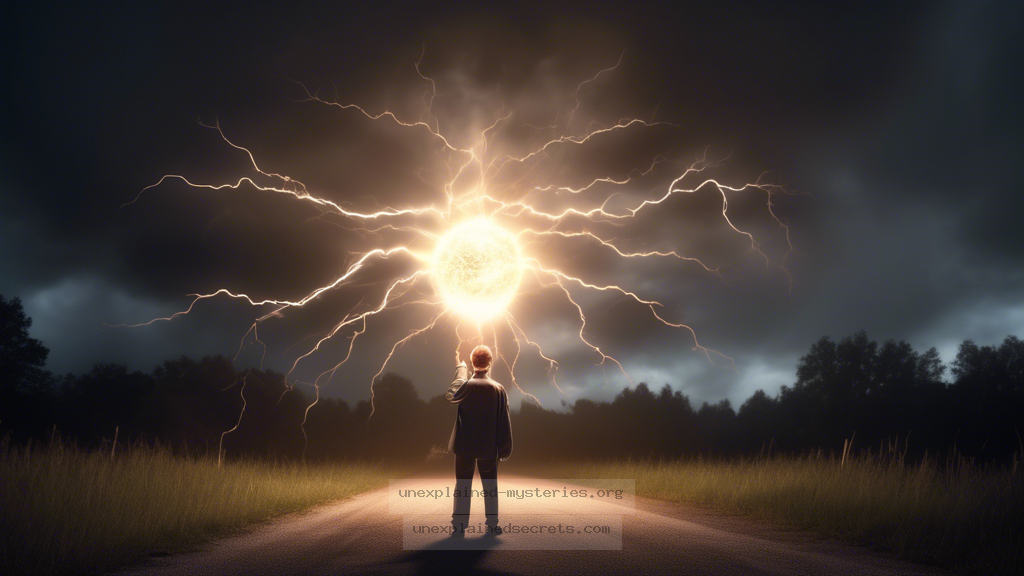What Causes Ball Lightning, and Why Is It One of Science’s Greatest Mysteries?
What Causes Ball Lightning, and Why Is It One of Science’s Greatest Mysteries?
Ball lightning is an enigmatic atmospheric phenomenon that has puzzled scientists for centuries. This mysterious occurrence, often described as glowing spheres of light, appears during thunderstorms or in the aftermath of lightning strikes. While many have witnessed ball lightning, its exact cause and nature remain elusive, which makes it a compelling subject for scientific inquiry. Understanding ball lightning not only challenges our current scientific paradigms but also invites us to explore the boundaries of physical laws as we know them. In this blog post, we will delve into the historical context, core concepts, theories, and ongoing research surrounding ball lightning.
Historical Context of Ball Lightning
The phenomenon of ball lightning has a rich history, with accounts dating back to ancient civilizations. Historical texts from cultures around the globe describe mysterious glowing orbs appearing during storms. For instance, the Roman philosopher Pliny the Elder documented a sighting of glowing spheres in his work, “Natural History,” around the first century AD. In the 19th century, ball lightning began to be considered more scientifically, particularly after reports from prominent scientists like Thomas Edison and Nikola Tesla, both of whom claimed to have witnessed the phenomenon. However, it wasn’t until the late 20th century that formal scientific investigations into ball lightning began to take shape.
Core Concepts and Theories
Despite numerous eyewitness accounts, ball lightning remains shrouded in mystery. Scientists have proposed various theories to explain its occurrence, most of which fall into two main categories: electrical and chemical. The electrical theories suggest that ball lightning is a form of plasma, a state of matter created when gas is ionized. This ionization can occur during thunderstorms, leading to the formation of glowing spheres. Alternatively, some researchers propose that ball lightning is a result of chemical reactions, possibly involving silicon and other materials, which can create glowing particles in the right conditions.
- Electrical Discharge: Suggests ball lightning is a form of plasma.
- Chemical Reactions: Proposes the involvement of silicon and other materials.
- Quantum Phenomena: Some theories explore quantum mechanics as a potential explanation.
Practical Evidence and Observations
Despite the theoretical underpinnings, the evidence to support the existence of ball lightning is largely anecdotal. Many eyewitness accounts describe the spheres as varying in size and brightness, typically measuring between the size of a golf ball to that of a basketball. They can appear to hover, move erratically, and even pass through solid objects. The most famous documented case occurred in 1984 when a group of scientists in the Soviet Union observed a ball lightning event in a laboratory setting. They documented the phenomenon but were unable to replicate it, highlighting the difficulty in studying ball lightning under controlled conditions.
Alternative Perspectives on Ball Lightning
Some skeptics argue that many reported instances of ball lightning could be explained by other phenomena, such as St. Elmo’s fire or even the illusion of hallucinations during traumatic events like thunderstorms. Additionally, the atmospheric conditions that lead to the formation of ball lightning are not yet fully understood, which allows for a broad range of interpretations. Researchers continue to debate whether ball lightning is a distinct phenomenon or simply a misinterpretation of known electrical phenomena.
Common Misconceptions and Clarifications
One prevalent misconception is that ball lightning is merely a myth or a product of imagination. However, the persistence of reports from credible witnesses, including scientists and military personnel, lends some credibility to the phenomenon. Another misconception is that ball lightning is harmless. While many encounters with ball lightning end without incident, there have been cases where it has caused property damage and injuries, further complicating our understanding of its nature.
- Ball lightning is not a myth; credible witnesses have reported encounters.
- It can cause damage and injuries, contrary to some beliefs.
Best Practices for Investigation and Study
The study of ball lightning poses unique challenges given its transient nature. Researchers advocating for a more systematic approach recommend using advanced technologies such as high-speed cameras and electromagnetic field detectors to capture data during thunderstorms. They also suggest creating simulations in controlled environments to replicate the conditions that might lead to the formation of ball lightning. Collaboration between physicists, meteorologists, and electrical engineers is crucial to developing a more comprehensive understanding of this phenomenon.
Future Developments and Ongoing Research
Recent advancements in materials science and plasma physics may soon yield new insights into ball lightning. Researchers are exploring the potential for creating artificial ball lightning in laboratory settings, which could help in unraveling its mysteries. Additionally, the burgeoning field of quantum physics offers intriguing avenues for understanding how ball lightning might operate outside conventional scientific norms. As technology continues to evolve, so too does our understanding of atmospheric phenomena, with ball lightning at the forefront of exploration.
Real-World Examples of Ball Lightning
Several well-documented sightings of ball lightning have occurred throughout history. One notable example is the 1901 incident in which a ball of light entered a house in the English village of Walsall, passed through walls, and exited through a window. In 1960, an American pilot reported seeing a ball of light while flying through a thunderstorm, which flew alongside his aircraft before disappearing. Such accounts highlight the intriguing and often perplexing nature of ball lightning as well as the urgent need for scientific inquiry into this phenomenon.
Conclusion
Ball lightning is one of science’s greatest mysteries, challenging our understanding of the natural world. With its rich historical context and a plethora of eyewitness accounts, it invites researchers to explore the boundaries of known physics. Although various theories exist, none have definitively explained its occurrence. As technology advances, the hope is that future studies will yield a clearer understanding of ball lightning, potentially unlocking secrets that have remained elusive for centuries. The ongoing research fuels curiosity and underscores the importance of interdisciplinary collaboration in unraveling the complexities of our universe.
Other Articles
Recent Posts
- What Happened to Flight MH370? The Conspiracy Theories That Still Haunt Us
- What Secrets Lurk Within the Walls of the Infamous Trans-Allegheny Lunatic Asylum?
- What Evidence Supports the Existence of Bigfoot in the Pacific Northwest?
- What Happened to the Indus Valley Civilization? Unraveling the Mysteries of Ancient Urban Life
- Can Telepathy Be Scientifically Proven Through Laboratory Evidence?







